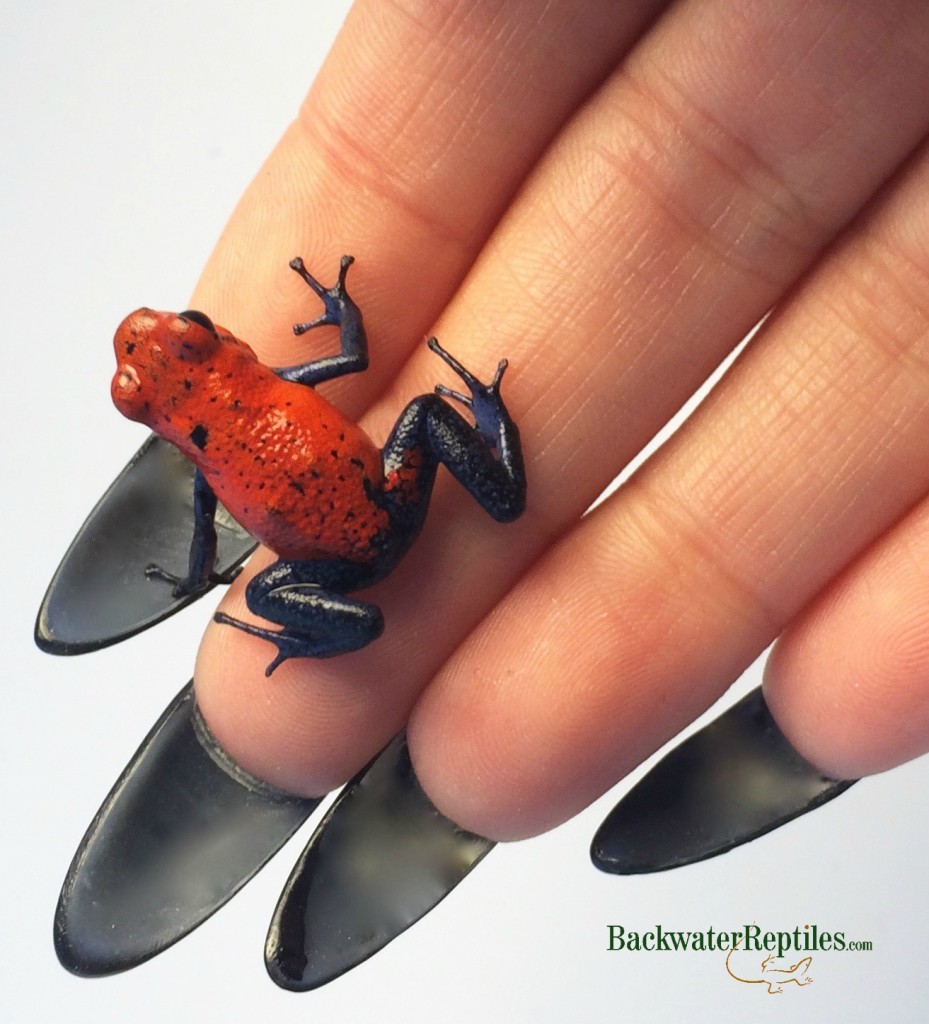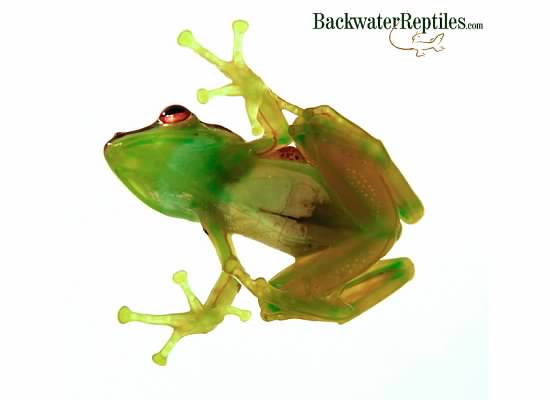Have you always wanted a pet frog but feel you don’t have the room to keep a semi-aquatic animal? Well, we’ve got good news for you because not all the best pet frogs need a ton of space or large tanks full of water to thrive.
In fact, we’ve got some recommendations for frog species that don’t require enclosures larger than a shoe box. Read on to find out our top picks for the best small pet frogs and how you can get your hands on one.
The Best Small Pet Frogs: A Review
Painted Mantella (Mantella madagascariensis)
Painted mantellas are certainly attractive pet frogs. They hail from Madagascar and are available in a variety of gorgeous color combinations. They have rich, black bodies and eyes with yellow, orange, green, and red accents. These tiny frogs are so colorful in fact, that people often confuse them for poison dart frogs.

These little frogs can get up to one and a half inches long, but most will stay around an inch long on average. Their small size means they only need a home that is around five gallons, at least if you’re only keeping a single frog. Pairs should be kept in a ten gallon tank.
Most mantellas can be shy, so we recommend providing a substrate that retains moisture well but also allows the frog to hide. Another option is to provide several hide spaces.
Backwater Reptiles has colorful painted mantella frogs for sale.
Strawberry Dart Frog (Dendrobates pumilio)
It’s a common misconception that poison dart frogs are dangerous and can harm you if you touch them. In the wild, this might be true, but in captivity, the frogs actually lose their potency. It is believed that the poison secreted through their skin is manufactured through insects the frogs eat in their wild habitats, so when we humans feed them captive bred insects, the frogs don’t create the poison any more. So, the bottom line is that you can actually hold and handle your dart frog, but due to their somewhat delicate nature, we don’t recommend handling them a lot.

Strawberry dart frogs usually don’t get bigger than a large grape. This is usually around an inch to an inch and half long. A typical life span for a strawberry dart frog is anywhere from four to eight years in captivity.
Because these frogs are so small, we feed ours pinhead crickets and fruit flies. Sometimes they will even eat small mealworms.
If you are in the market for a healthy strawberry dart frog, we do sell them on our website.
Glass Tree Frog (Mantidactylus sp. / Hyalinobatrachium sp. / Boophis sp.)
There are many species of glass tree frogs available through breeders, but they all have one thing in common – their translucent skin and visible organs. The degree of transparency of the frog varies from species to species. Some are nearly clear on top and bottom, while other species are only faintly see-through on their tummies.
As far as size is concerned, most glass frogs will range in size from 20 to 30 millimeters.
These fascinating and unique-looking frogs are not the easiest species to come by in captivity. In the wild, they are arboreal, riparian (living in streams), and nocturnal, which means that wild-caught frogs are tough to obtain and captive breeding efforts are not that successful.

If you do decide to keep a glass frog, keep in mind that they are delicate and shy. You will need to have an arboreal set up with more vertical space than horizontal space, although for a single frog, that tank still need not be bigger than a five gallon enclosure.
Although glass tree frogs are one of the rarer frog species sold on this list, Backwater Reptiles does have them for sale.
Clown Tree Frog (Hyla leucophyllata)
Of all the frogs on this list, we’d say that the clown tree frog is probably the largest on average. Because it’s a tree frog, this species will also tend to appear longer in general because its limbs and toes are very pronounced in order to support its arboreal life style. But, even being the largest on this list, the clown tree frog still only maxes out at around four centimeters on average.
Clown tree frogs are not only small, but they are very attractive little frogs too. Most are dark brown or red in base color with lighter white, yellow, or beige markings or splotches. They really are quite striking little amphibians.

Due to its arboreal nature, your pet clown tree frog will require a home that is taller, rather than flatter. It still doesn’t require a large enclosure, but just make sure that the frog has a bit of room to climb. We recommend a ten gallon tank with a screen top lid and plenty of foliage, either real or fake.
Luckily, clown tree frogs are readily available. Not only are they fairly common frogs in the pet trade, but they are also relatively inexpensive.
Here’s a great enclosure for your frog, with everything it’ll need to thrive in your care:
(Click the picture to see the lowest prices)
Conclusion – The Best Small Pet Frogs
All of the small pet frogs on our list are somewhat delicate due to their small size. This means that they are not ideal pets for someone who wants to take their frog out of its enclosure and handle it a lot. The small frogs on this list are best for pet owners with limited space to house their amphibian who enjoy looking at and admiring their frog rather than playing with it.

